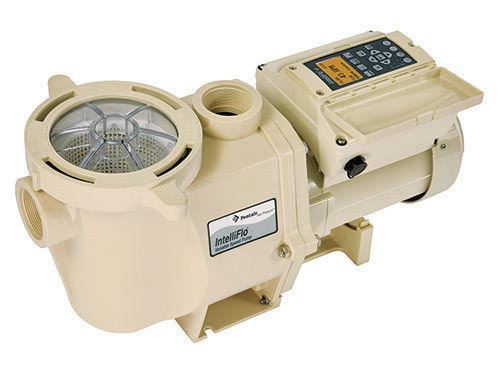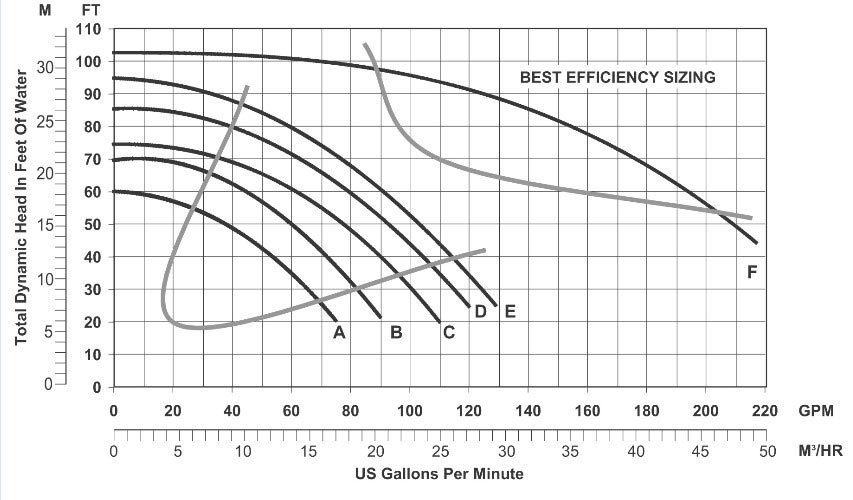With
so many technical terms to know and different models to consider, it’s no
wonder that many of us end up at the mercy of the local pool store or our
weekly maintenance guy for help
navigating all of the available information in hopes of making an
informed and intelligent pool pump buying decision. Below we’ve put together some helpful information
on how to find the best
pool pump for your needs - hopefully this will eliminate some of the confusion when it comes to purchasing this important piece of pool equipment.

|
Before we get started, I’ll give you a chance to get out of reading this article… The simple way to address this topic is to purchase one of the new variable speed pumps we have available. These pumps will work on any pool, regardless of plumbing size, filter type/size or feet of head, etc. All terms we would rather not concern ourselves with! And most utility companies offer a rebate if you install one. The most popular variable speed pump on the market that will work on almost every residential pool in the industry is the Intelliflo by Pentair. |
Okay,
back to picking out the right pump…
There
are two very important things to remember -
- Not all pumps are the same and not all horse power
ratings mean the same thing. For example, a 2HP pump from 15 years ago is not
necessarily as efficient or has the water flow of a 2HP pump manufactured
today. Additionally, all 2HP pumps made today are not the same. There are
variations that alter the performance drastically. Don’t be alarmed, all you
need to know is that even though the horse power might be the same, the
performance is often much different and you might not be comparing apples to
apples.
- Your current pump may have not been sized correctly to
begin with. Pool builders are notorious for putting a 2HP pump in their
proposal because the competition did, and they can’t put a smaller pump in for fear
their bid will be viewed inferior. When in actuality, you want the lowest
horse power available that will give you the performance and circulation
required for your system. If a 1HP pump will provide the circulation your pool
needs and will turn the water over as recommended, why pay more for a 2HP in
up-front costs as well as on-going operating costs?
Below
are the five steps to selecting the best pump for you:
STEP
1 – Determine the gallons in your pool and the desired turnover rate.
A healthy turnover rate is 8-10 hours for most
residential pools with heavily used pools having a turnover rate slight shorter
(5-7 hours).
STEP
2 – Determine your minimum flow
rate.
Divide
your gallons by the turnover rate desired
For example: 24,000 gallons / 8
hours = 50 gallons per minute (GPM)). 50 GPM is the minimum flow you need from
your pool pump.
| Pool Size |
Turnover Rate |
Minimum Flow Rate |
| 35,000 Gallons |
6 Hours |
97 |
35,000 Gallons
|
8 Hours
|
73 |
| 24,000 Gallons |
6 Hours
|
67 |
24,000 Gallons
|
8 Hours
|
50 |
18,000 Gallons
|
6 Hours
|
50 |
18,000 Gallons
|
8 Hours
|
38 |
STEP
3 – Determine your maximum flow
rate.
The
flow rate of your system is limited by two factors –
- The size of pipe/plumbing.
- The equipment your pool has, specifically your filter.
The first
thing to check is your size of plumbing. Here is the max flow that the most
popular plumbing sizes can accommodate (per line):
| PVC pipe maximum flow rates by size |
| 1.5" |
2" |
2.5" |
3" |
| 44 GMP |
73 GMP |
120 GMP |
160 GMP |
For example: If you have two 1.5”
suction lines (such as a skimmer and main drain) then your maximum flow rate
will be 88 GPM (44 GPM per line).
If
you have 1.5” PVC plumbing that can handle a max of 44 GPM (per line) and you
install a pump that has a flow rate of 100 GPM, it will do you no good since
the pipe size can’t handle that amount of flow.
In
fact, this will actually damage your system’s plumbing, the pump can cavitate
as it “starves” for water. Components inside the filter can deteriorate at an
accelerated rate as well.
In the diagram below, you will see this pool has
two skimmers and a main drain. So, if the system is plumbed with 1.5” PVC, the
maximum flow rate would be 132 GPM (44 GPM x 3 lines) while in in pool mode.
When the valves are turned to spa mode, the maximum flow rate would be 44 GPM
as there is only one suction line from the spa.
Another
factor that needs to be considered when you’re looking at aspects of your
system that limits flow, is your pool filter. The type of filter (cartridge, DE
or sand) and the size will determine the amount of flow they can handle. See
the chart below for a better illustration of maximum flow rates as well as best
flow rates.
- If you have a spa attached to your pool then you want a
pump that will produce the GPM closer to the max flow.
- If you have a pool only, then the lower, best flow rate GPM
is what you want your pump to provide.
| Square Feet |
24 |
36 |
48 |
60 |
72 |
| Max Flow |
48 |
72 |
96 |
120 |
144 |
| Best Flow |
36 |
54 |
72 |
90 |
108 |
| Square Feet |
100 |
200 |
300 |
400 |
500 |
| Max Flow |
38 |
75 |
112 |
150 |
150 |
| Best Flow |
30 |
50 |
75 |
100 |
125 |
| Tank Diameter |
19 |
21 |
24 |
30 |
36 |
| Max Flow |
40 |
50 |
60 |
100 |
140 |
STEP
4 – Calculate the resistance (head) of your system.
Again,
don’t be alarmed. Even though this calculation is based on many different
factors:
- Do you have a heater, chemical feeder or salt system
- The amount of turns in
your plumbing, size of plumbing
- Distance from the skimmer to the pump, etc.
We have a few easy steps to determine an approximate amount of head or
resistance your system has.
A good estimate is to take
the amount of feet from where your suction lines are (skimmers or main drain)
back to where your pump will be located. The total amount of return piping
should give you a good idea on how many feet of head your pump will have.
STEP 5 – Choose your pump.
Every pump will have a performance
or curve chart as you see below.
For example, if you had 60 feet of head and needed a flow
rate of 80 GPM then pump “D” would be the best choice for your system. Follow
the line for 60 from the left across until it intersects 80 from the bottom of
the chart and you see they cross closest to the “D” line.
Now
that you have calculated your pool size in gallons, determined the best
turnover rate for your pool, know your approximate feet of head and know the
flow rate best for your pool, you are now ready to shop for pool pumps!
Click
here to view our selection of pool pumps.
If
you are still are uncertain and would like some help, give us a call at
888-836-6025 and we’d be more than happy to assist you. And, remember the
variable speed pump option.


